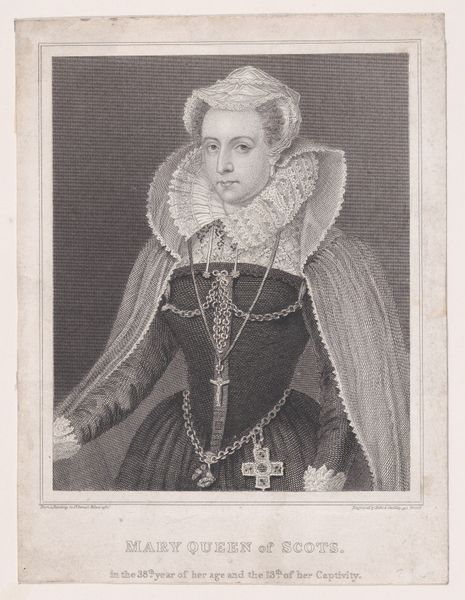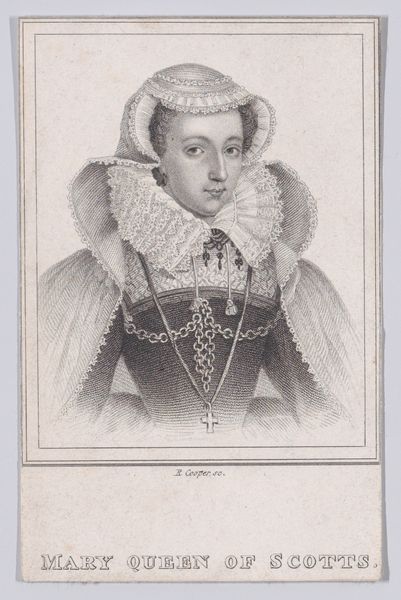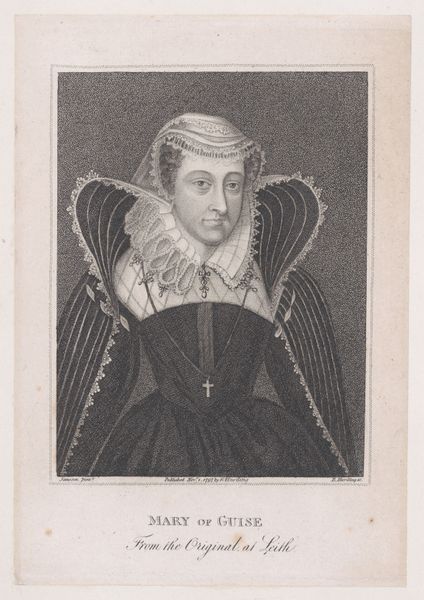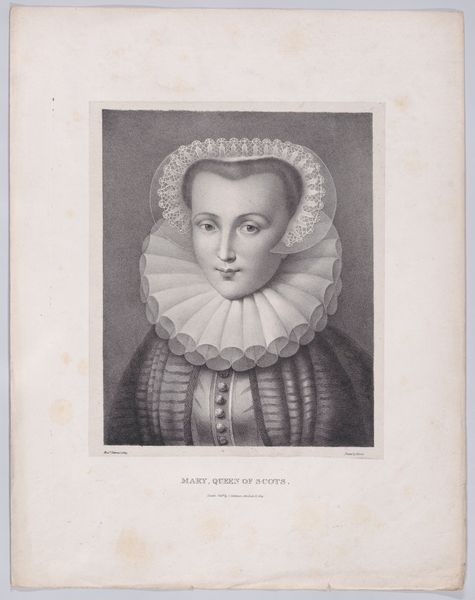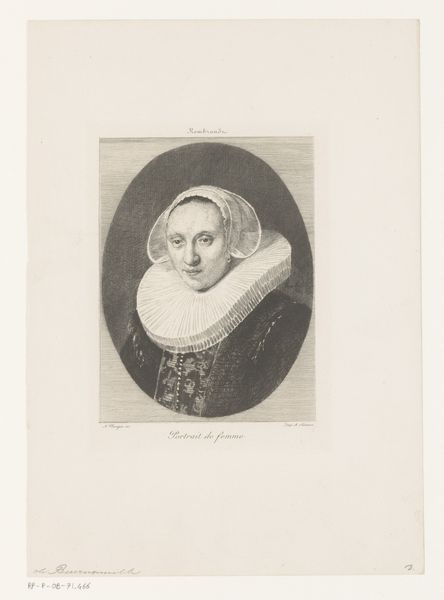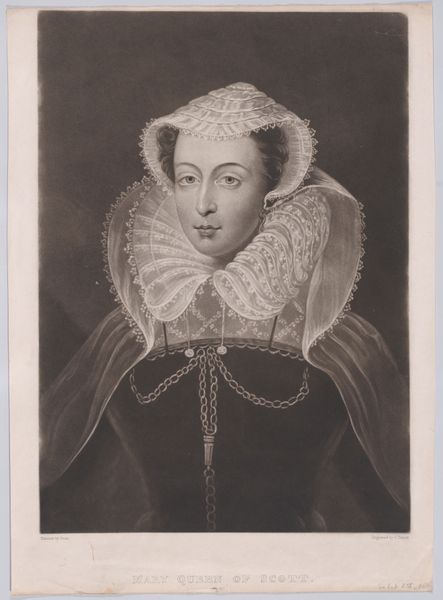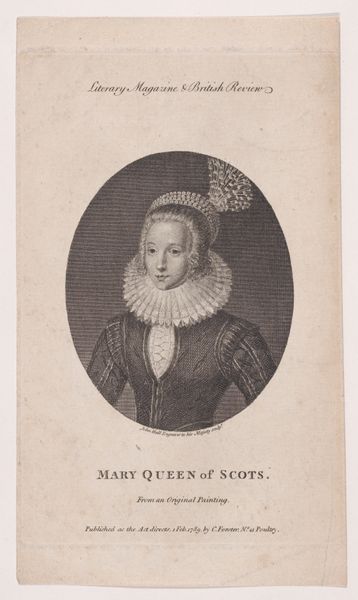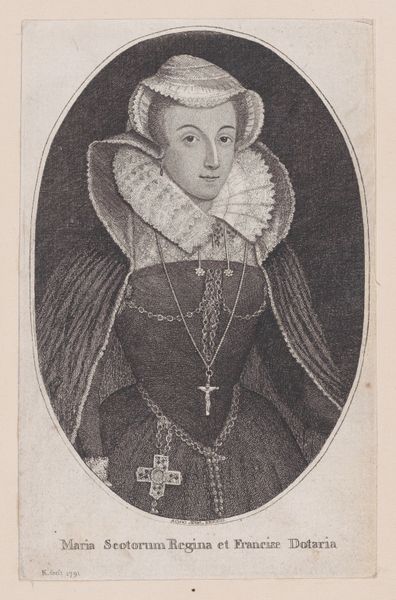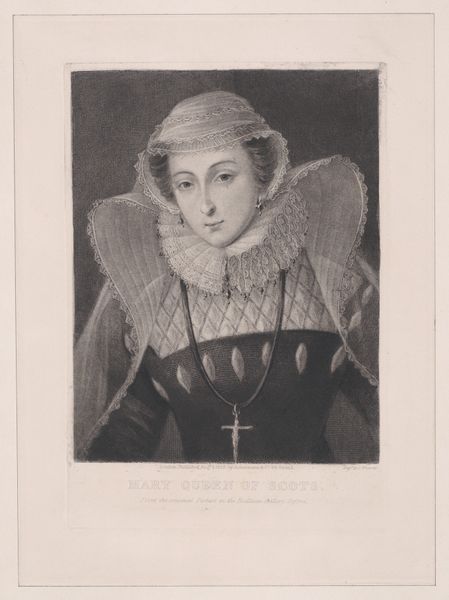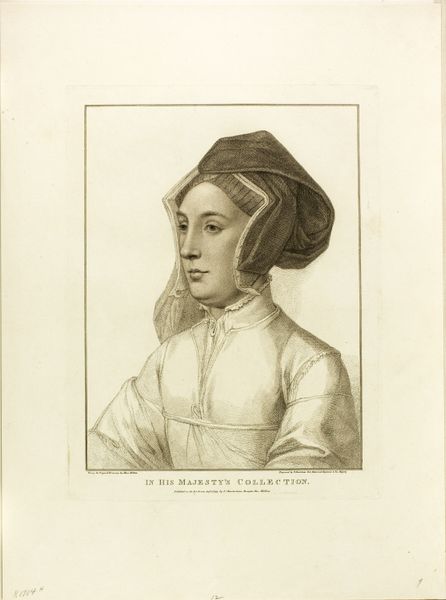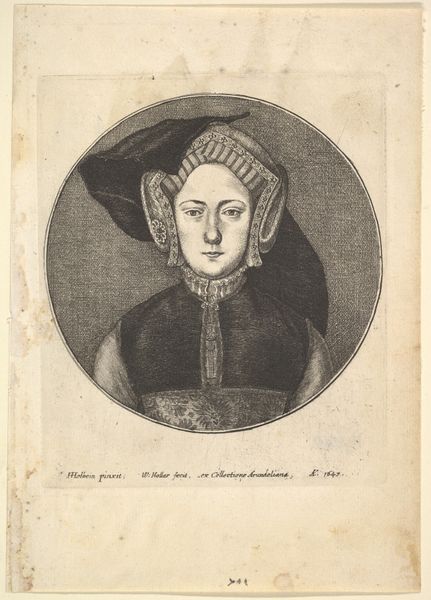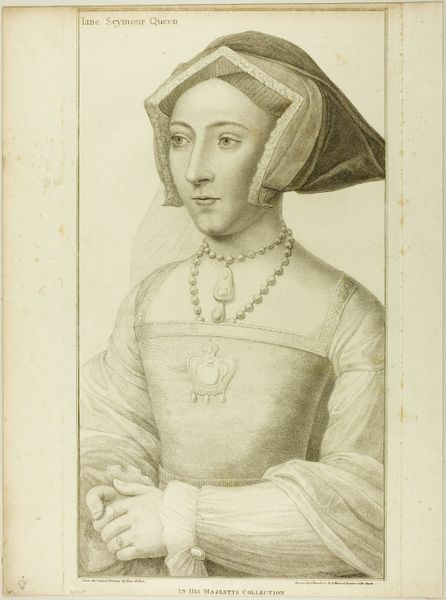
drawing, print, engraving
#
portrait
#
drawing
# print
#
history-painting
#
engraving
Dimensions: Plate: 8 7/16 × 5 7/16 in. (21.4 × 13.8 cm) Sheet: 13 1/4 × 9 7/8 in. (33.6 × 25.1 cm)
Copyright: Public Domain
This print of Mary, Queen of Scots, was made by William Pickering in the early 19th century, using engraving. It offers us a window into the enduring power of imagery to shape historical memory. Mary, Queen of Scots, remains a controversial figure. In Pickering's time, she was a potent symbol in Britain’s ongoing debates about national identity and religious allegiance. Note how the print presents Mary, not as a scheming political actor, but as a tragic figure: a sensitive face framed by the severe ruff of her time. In the 19th century, historical paintings and prints were often enlisted to promote particular political viewpoints, or nostalgic visions of the past. Publishers like H. Colburn played a key role in disseminating these images to a wide public. Historians examine the artist's choices, the cultural context, and the print's reception. Research into archives and publications of the time can reveal how images like this one were deployed in service of larger cultural and political agendas. The meaning of a work of art is never fixed; it evolves as its social and institutional context changes.
Comments
No comments
Be the first to comment and join the conversation on the ultimate creative platform.
